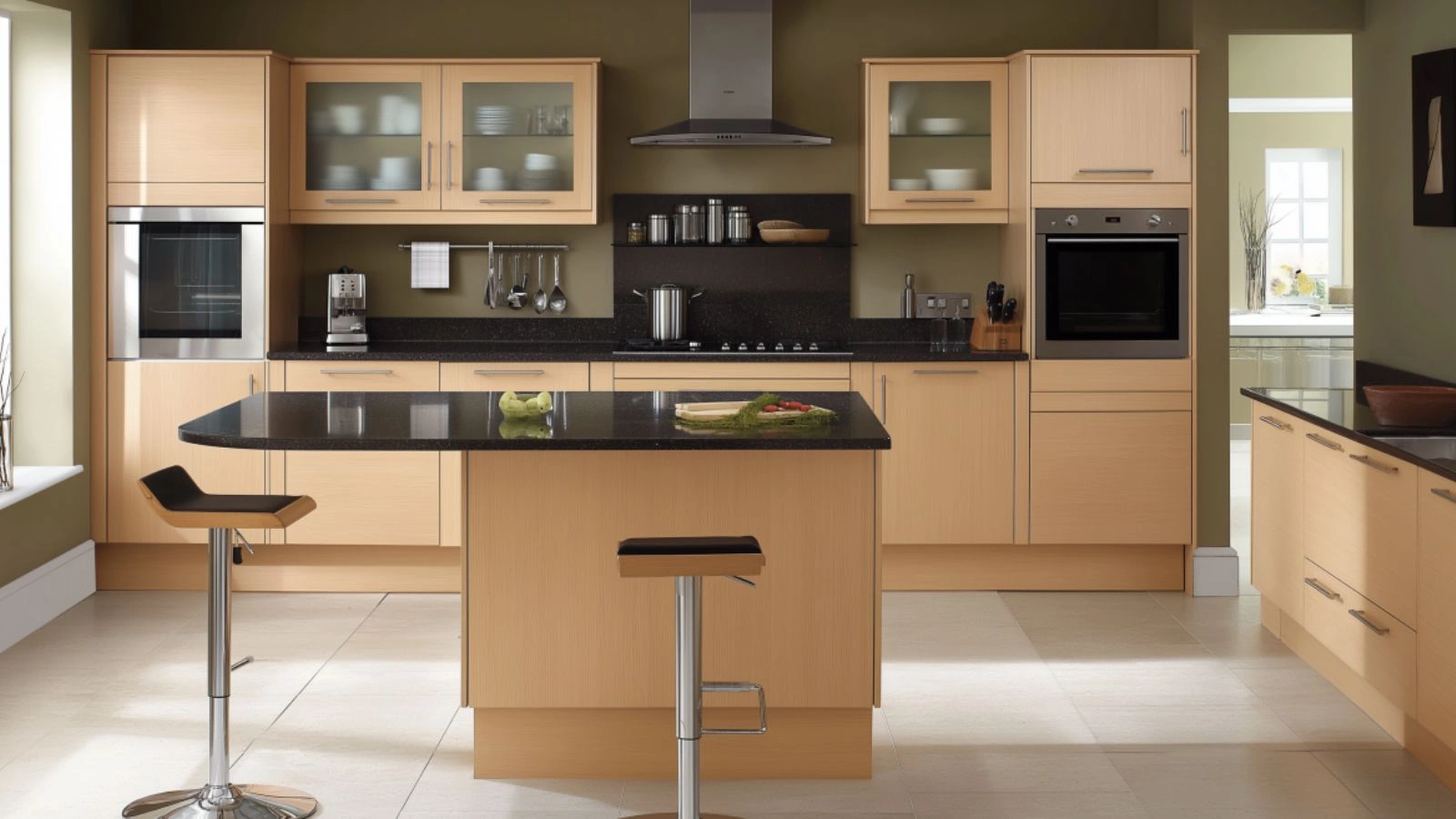Dark Countertops in Minimalist Kitchen Designs: Elegant Contrast for a Sleek, Modern Look
Table of Contents
Minimalist kitchens have become the hallmark of modern home design, where simplicity meets sophistication in the most functional way. And at the center of this evolution is a bold yet refined design choice: dark countertops. Whether it’s matte black quartz, honed granite, or rich charcoal concrete, dark surfaces are making a striking statement in minimalist kitchen aesthetics.
A 2024 interior design trend report by Houzz revealed that over 35% of homeowners renovating their kitchens are choosing darker countertop finishes—largely due to their visual contrast, durability, and ability to ground a neutral palette. In minimalist spaces that prioritize clean lines, uncluttered surfaces, and natural textures, dark countertops introduce depth without overwhelming the design.
In this post, we’ll explore how dark countertops enhance minimalist kitchen layouts, provide functional and aesthetic benefits, and offer a timeless design approach for anyone looking to update their cooking space. You’ll learn how to choose materials, pair them with cabinetry and flooring, and create a clean, dramatic atmosphere without clutter. We’ll also cover pros and cons, styling tips, and ideas tailored for small and large kitchens alike.
Why Dark Countertops Work in Minimalist Kitchens
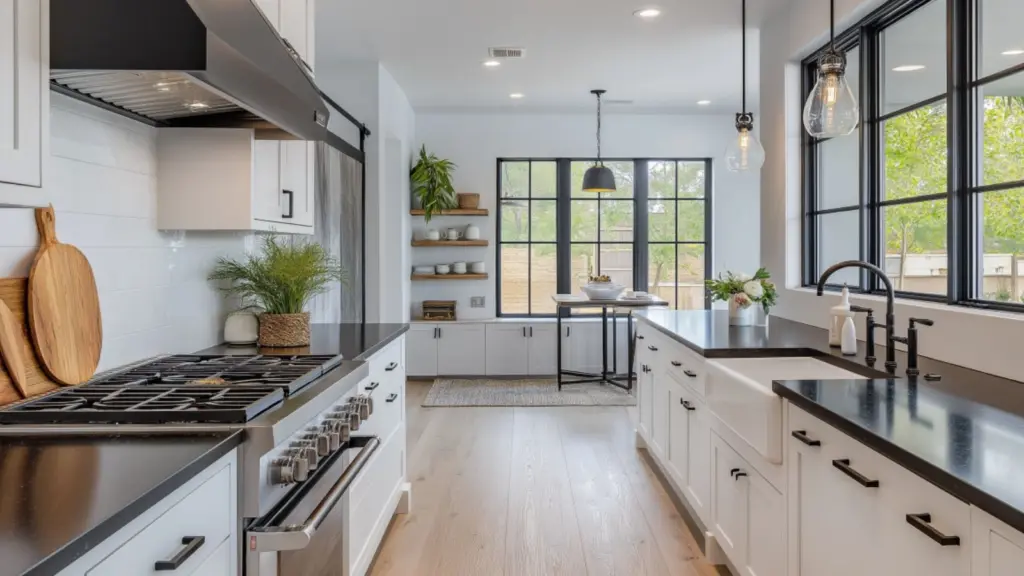
Dark countertops aren’t just stylish—they serve a practical purpose in minimalist design. Their depth and visual weight help anchor open spaces, providing a grounding effect in kitchens where light tones dominate. Minimalist kitchens thrive on balance, and darker surfaces prevent the space from feeling too stark or clinical.
In white or light-toned kitchens, dark countertops introduce contrast that feels intentional rather than harsh. Materials like soapstone, leathered granite, and quartz offer rich tones and subtle patterns that add texture without detracting from the clean lines of minimalism. They’re also easier to maintain when it comes to staining or hiding everyday mess.
Functionally, many dark materials are scratch- and heat-resistant, making them ideal for heavily used prep spaces. When paired with matte finishes and seamless cabinetry, the result is a sleek and modern yet approachable environment.
Visual Table: Benefits of Dark Countertops in Minimalist Kitchens
| Feature | Benefit | Why It Works for Minimalism |
|---|---|---|
| Visual depth | Adds contrast | Breaks up monotony of white/neutral tones |
| Texture | Enhances visual interest | Supports clean design without ornamentation |
| Durability | Resistant to scratches and stains | Low-maintenance and clutter-free |
| Style versatility | Works with wood, metal, or glass | Complements neutral minimalist palettes |
Pairing Dark Countertops with Neutral Cabinetry
Pairing dark countertops with neutral-toned cabinetry is one of the most popular and effective minimalist combinations. The result? A timeless and high-contrast kitchen that’s both elegant and serene.
Soft whites, warm greige, and light wood cabinetry offer a beautiful counterbalance to the boldness of dark surfaces. This approach maintains the airy quality of minimalism while adding drama through contrast. If you prefer ultra-modern, go for handleless cabinets in soft matte finishes. For a warmer twist, incorporate oak or ash wood tones.
Hardware plays a subtle but important role. Opt for minimalist pulls in black, brushed nickel, or brass to complement the countertop’s tone and avoid visual clutter.
Visual Table: Ideal Cabinet Colors with Dark Countertops
| Cabinet Finish | Recommended Countertop Pairing | Overall Vibe |
|---|---|---|
| Matte white | Black quartz or granite | Crisp and clean |
| Light wood | Charcoal concrete | Warm and earthy |
| Greige | Leathered basalt | Soft yet sophisticated |
| Slate blue | Honed granite | Moody and refined |
Best Materials for Dark Countertops
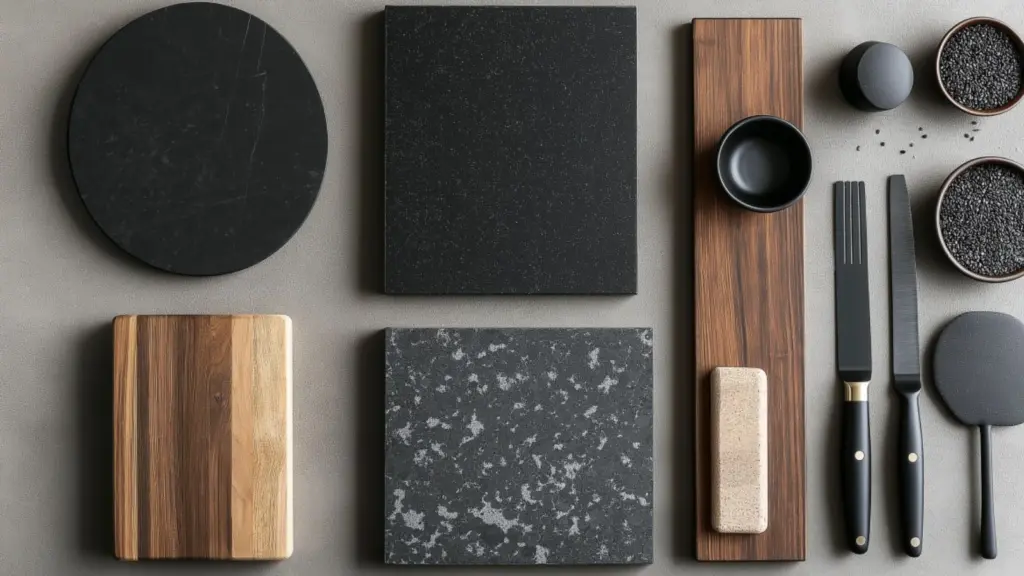
Choosing the right material is key to achieving the sleek, polished look that minimalist kitchens are known for. Each surface offers a unique combination of texture, color depth, and practical benefits.
Quartz is a top choice for its low maintenance and wide variety of finishes. You can opt for solid black or subtle marbling for visual interest. Its durability and non-porous nature make it perfect for daily use.
Granite, especially in leathered or honed finishes, brings natural character with minimal maintenance. The dark tones vary from jet black to deep green, providing organic texture without the shine of polished surfaces.
Soapstone is another favorite for its smooth, velvety surface that darkens over time. Though softer than granite or quartz, it offers unmatched character and patina.
Concrete countertops—custom-poured in dark pigments—fit well in ultra-modern, industrial-minimalist spaces. They can be sealed to prevent staining, and their tactile quality brings a handmade feel to a streamlined kitchen.
Visual Table: Dark Countertop Material Comparison
| Material | Pros | Cons | Best Use Case |
|---|---|---|---|
| Quartz | Durable, low-maintenance, stain-resistant | Higher cost | Everyday kitchen use |
| Granite | Natural variation, heat-resistant | Needs sealing | Elegant, high-use kitchens |
| Soapstone | Unique patina, soft texture | Can scratch/dent | Vintage or soft-modern spaces |
| Concrete | Customizable, textural | Can crack or stain | Industrial or custom kitchens |
Creating Visual Balance with Flooring and Backsplashes
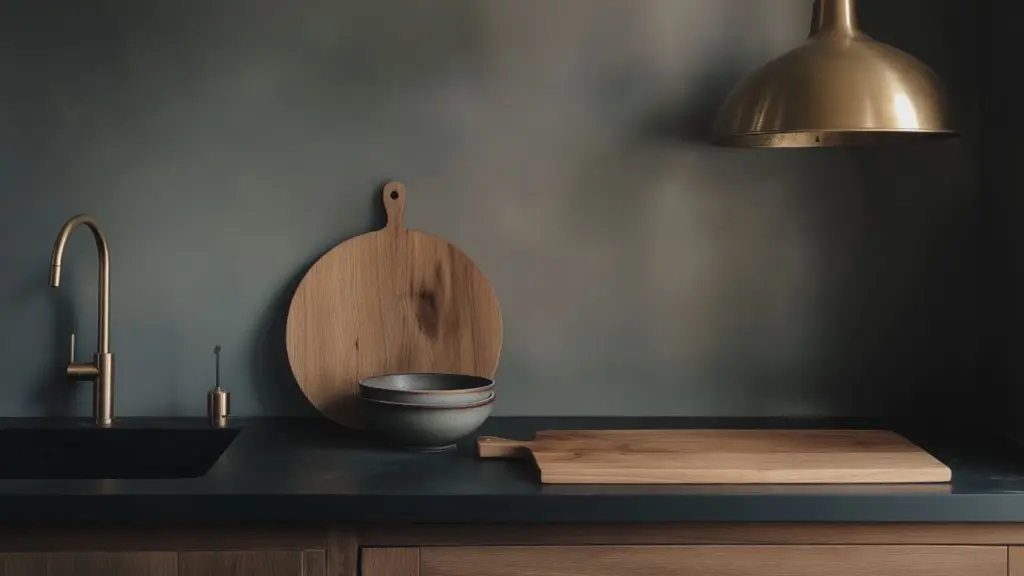
To prevent dark countertops from overpowering the space, pairing them with the right flooring and backsplashes is essential. Light wood or pale concrete flooring keeps the space grounded and open. Wide-plank flooring in oak or maple softens the contrast with a touch of warmth.
Backsplashes should complement, not compete. Go with white subway tiles, creamy zellige tiles, or even a continuation of the countertop material for a seamless, cohesive look. Minimal grout lines and matte finishes reinforce a clean aesthetic.
If your kitchen lacks natural light, using reflective or light-colored backsplashes can help maintain brightness.
Visual Table: Flooring & Backsplash Pairing with Dark Countertops
| Surface | Material Suggestion | Design Tip |
|---|---|---|
| Flooring | Light oak, concrete-look tile | Keep wide and minimal grout lines |
| Backsplash | White subway or plaster tile | Use matte or satin finish |
| Integrated slab | Same as countertop | Creates seamless elegance |
Accents That Complement Dark Surfaces
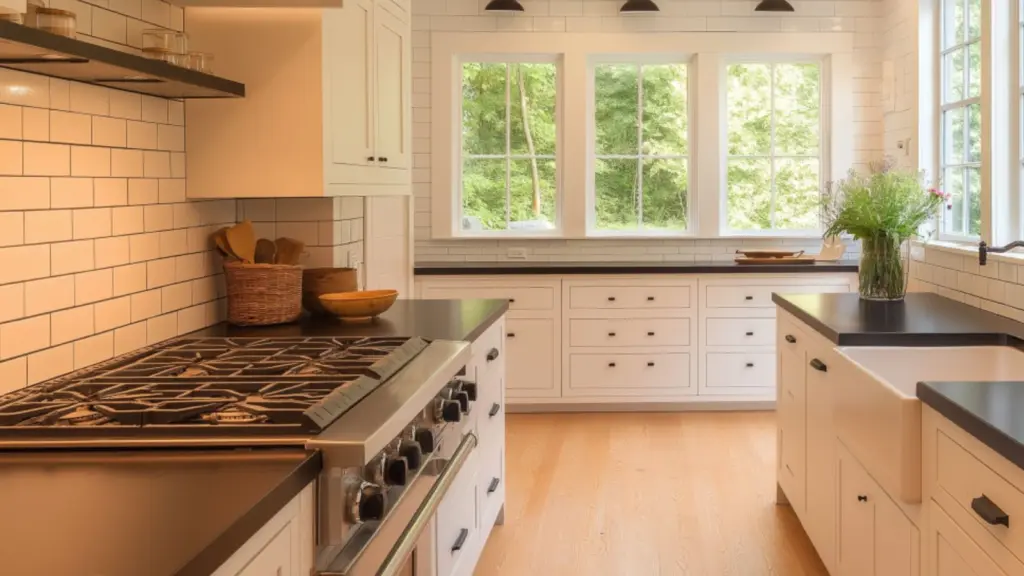
Minimalist kitchens don’t rely on heavy décor, but thoughtful accents can elevate the design. Open shelving with curated ceramics or matte black accessories creates harmony without clutter. Wooden cutting boards, linen towels, and potted herbs add a lived-in feel.
Lighting fixtures should be simple yet sculptural. Black or brass pendant lights above islands or counters blend beautifully with dark countertops while adding dimension to the space.
Small appliances, too, can blend in—choose matte finishes in black, white, or stainless steel to avoid visual noise.
Visual Table: Complementary Accents for Dark Countertops
| Accent Type | Material | Placement Tip |
|---|---|---|
| Cutting boards | Natural wood | Lean against backsplash |
| Pendant lights | Matte black or brass | Centered above island |
| Shelving items | Ceramics, plants | Keep minimal & tonal |
| Bar stools | Black metal, wood seat | Under counter overhang |
Designing Small Kitchens with Dark Countertops
Dark countertops can absolutely work in small kitchens—when designed thoughtfully. The key is contrast, light balance, and layout efficiency. In fact, a dark surface can create visual depth that makes a small space feel more grounded and defined.
Stick to lighter cabinets and wall colors to reflect light. Choose a streamlined countertop edge (like square or thin profile) to maintain clean lines. Vertical storage solutions and open shelving can help open up the visual field.
In galley kitchens, use under-cabinet lighting to brighten the workspace and counter areas. For studio apartments or small open-plan kitchens, darker countertops can help subtly define the kitchen zone without needing walls.
Visual Table: Tips for Using Dark Countertops in Small Kitchens
| Design Element | Recommended Approach | Why It Works |
|---|---|---|
| Cabinet color | Matte white or soft beige | Keeps visual contrast light |
| Layout | Galley or L-shaped | Maximizes function in small footprint |
| Lighting | Under-cabinet LEDs | Highlights countertop & prevents shadows |
| Accessories | Minimal, tonal | Avoids cluttering the space |
Conclusion
Dark countertops bring a sense of grounded elegance to minimalist kitchen designs. They offer texture, balance, and timeless sophistication—whether you’re creating contrast in a bright space or anchoring a compact kitchen. From sleek quartz and tactile soapstone to moody granite and custom concrete, these surfaces complement the principles of minimalism while making a confident statement.
When thoughtfully integrated with cabinetry, flooring, and accessories, dark countertops prove that minimalist design doesn’t have to mean sterile or boring. Instead, it can be bold, warm, and enduring—just like the kitchens we love to gather in.

